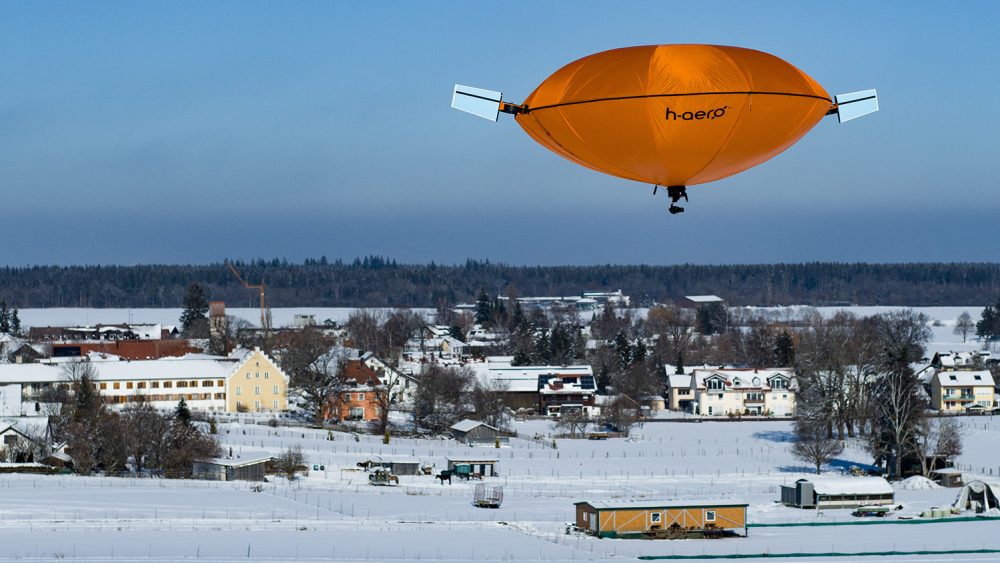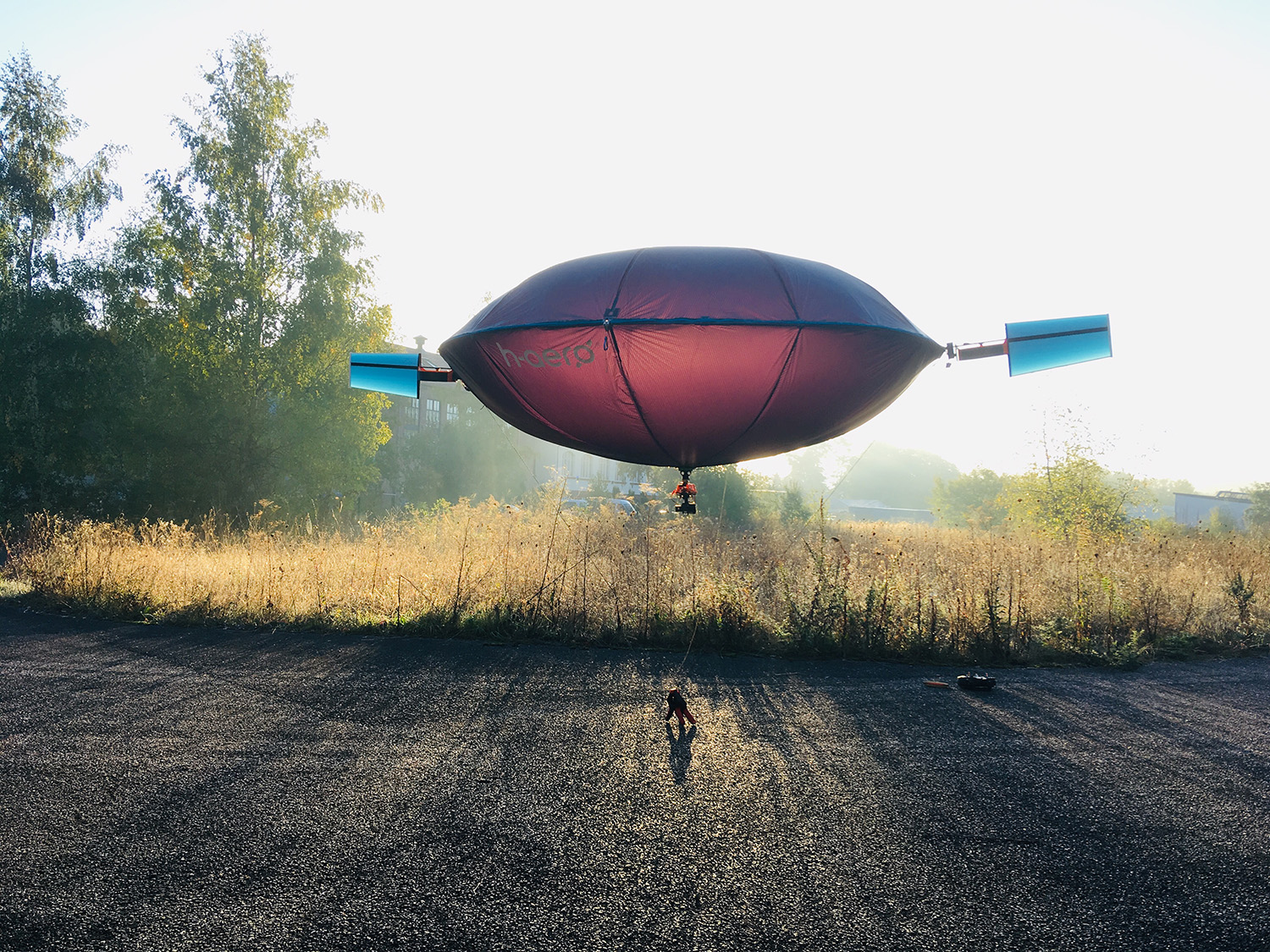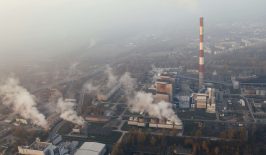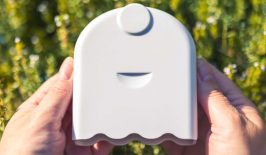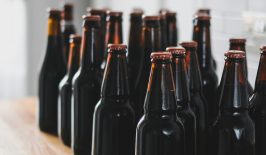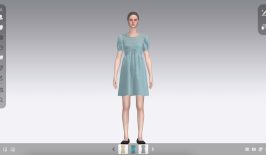Drones are perfect for recording changes in nature reserves and sensitive ecosystems. Unmanned aerial vehicles can be used flexibly, controlled precisely and can carry the necessary cameras and measuring instruments. However, short flight times and loud propellers can also pose problems for researchers.
In the past, we have already reported on biodegradable flying gliders and satellite-based measurements of water quality, which are being developed as an alternative for data collection. However, the Baden-Baden-based start-up Hybrid-Airplane Technologies is proposing a different solution with its innovative drones. Thanks to helium, the “h-aero” can stay in the air for several hours. At the same time, this design has been categorised as particularly safe by the Unmanned Aviation Association.
The problem with conventional drones
Conventional drones, just like aeroplanes and other multicopters, have to overcome their own weight through the thrust of their propellers when taking off. To realise long flight times, powerful batteries must therefore provide sufficient energy or particularly lightweight constructions must be used. While the use of heavy drones is therefore associated with high energy consumption, cameras, measuring instruments and loads cannot be transported with lightweight drones.
Keeping drones in the air for long periods is therefore a real challenge. But even if we could solve this problem with more efficient batteries, there are still disadvantages. For example, the high noise level emitted by the propellers can disturb people and animals in ecosystems. Additionally, there’s the danger that heavy aircraft pose if they crash. The use of drones over crowds of people is prohibited in Germany, which can be challenging for traffic monitoring or security purposes at festivals or concerts, for example.
It is precisely these hurdles that the start-up wants to overcome with its “h-aero” drones. Thanks to a helium-filled balloon, they hover almost completely by themselves.
What the drones from “h-aero” do differently
Hybrid-Airplane Technologies combines this helium balloon with some of the components of conventional drones. Thanks to propellers, an onboard computer and connections, the “h-aero” drones can fly autonomously and perform both take-offs and landings vertically. The manufacturer therefore sees the possible applications as comparable to conventional drones. The aircraft should also be able to withstand wind speeds of up to 20 km/h without any problems.
However, the helium balloon provides enough lift to keep the drone in the air like a zeppelin or a hot air balloon, without any motor power. Thanks to the special shape of the balloon, the drones are nevertheless highly agile. The result is a particularly efficient aircraft that slowly descends to the ground instead of crashing in the event of a fault. For additional safety, the manufacturer developed parachutes and thus achieved approval for use over crowds of people.
For test purposes, the start-up also installed solar panels on the top of the helium balloon. This has already enabled the company to add an autonomous, 24-hour non-stop flight to its list of technical milestones. One goal for the future is for drones to be able to stay in the air without recharging.
Technology enables new applications
According to the company, these advantages go hand in hand with new applications. As the drones fly very quietly and can remain in the air for long periods of time, they can be used to monitor nature reserves, forests and other sensitive ecosystems. Researchers could record particularly seamless analysis or monitoring data. Forests and landscapes could also be digitised using 3D cameras to create digital twins. Researchers could in turn use these for future forecasts or to simulate influences.
The German Federal Environmental Foundation (DBU) has already funded “h-aero” in 2020 as part of its special green startup programme. Together with three other start-ups, half a million euros were made available to “develop innovative and green solutions for the agricultural, energy and transport transition”.
Another exciting scenario was realised by “h-aero” in the same year. In Sonnenbühl, a municipality in the Swabian Alb, the ultra-light drones were used in combination with thermal imaging cameras. This made it possible to identify weak points in the insulation of roofs. Companies in an industrial area then used the data to improve the energy efficiency of their factory buildings.
Compared to conventional measurements using crane trolleys or helicopters, the use of “h-aero” drones is much less complicated. Thanks to the computer-controlled, autonomous operation of the drones, such flights can also be repeated precisely in order to recognise changes in monitored areas.
“H-aero” sees a wide range of possibilities for the future of drones. For example, the drones could be used in crisis areas to re-establish communication via mobile phone routers.
